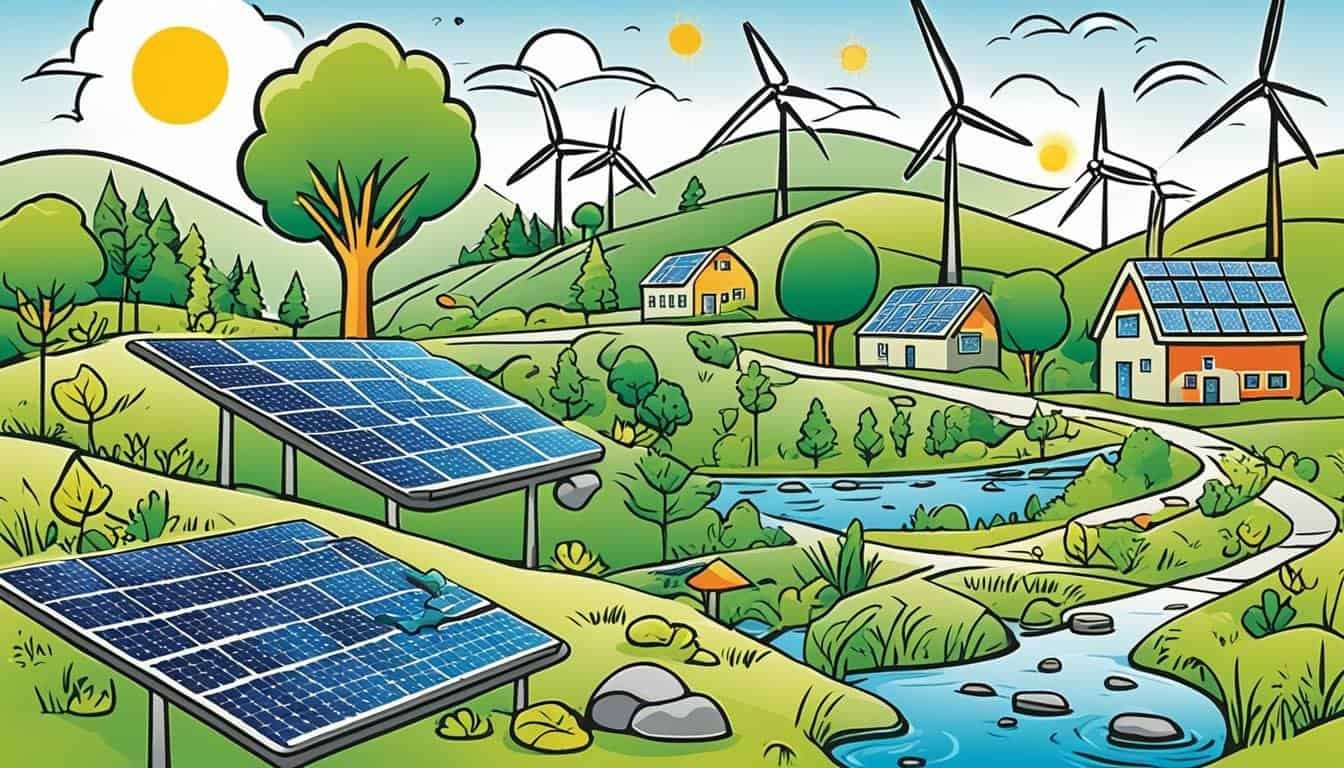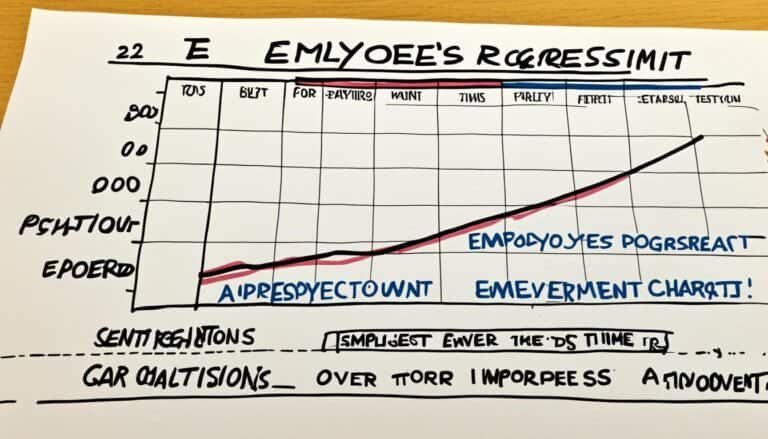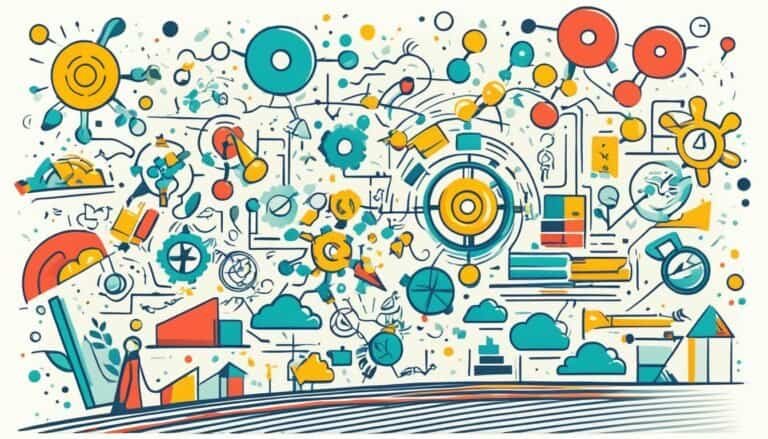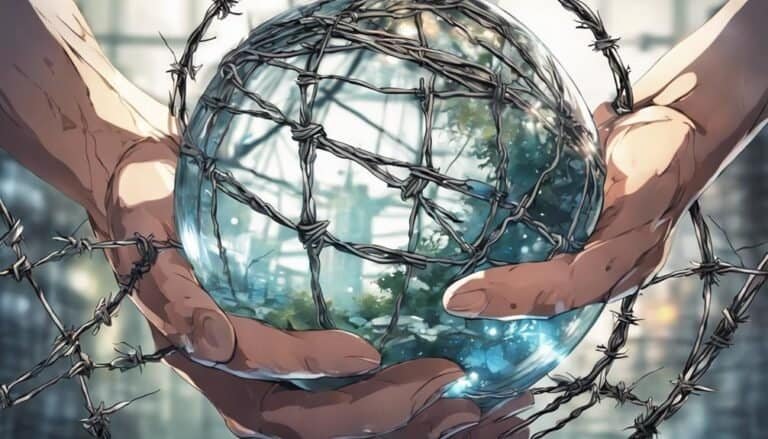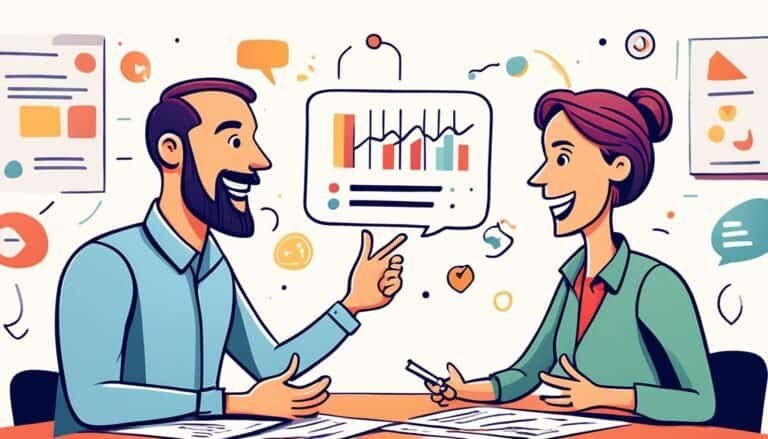What is Sustainable Development?
Did you know that sustainable development is not just a buzzword, but a crucial concept that holds the key to our future? It is a framework that aims to address the pressing global challenges we face today while ensuring a sustainable and prosperous future for generations to come. From environmental conservation to social equity and economic growth, sustainable development encompasses a wide range of interconnected goals and principles.
Key Takeaways:
- Sustainable development is a crucial concept for achieving a sustainable and prosperous future.
- It encompasses goals and principles related to environmental conservation, social equity, and economic growth.
- The United Nations Sustainable Development Goals (SDGs) set a global agenda for sustainable development.
- Balance between human needs and environmental protection is a key aspect of sustainable development.
- Challenges and limitations must be overcome through collective action to achieve sustainable development.
Understanding Sustainable Development
In this section, we will delve deeper into the meaning and concept of sustainable development. Sustainable development encompasses the alignment of environmental, social, and economic factors to ensure long-term well-being for present and future generations.
“Sustainable development is development that meets the needs of the present without compromising the ability of future generations to meet their own needs.” – Gro Harlem Brundtland
The core idea behind sustainable development is to strike a balance between economic growth, social progress, and environmental protection. It recognizes the interconnectedness of these three dimensions and emphasizes the importance of addressing their interdependence.
Sustainable development is not just about preserving the environment; it also encompasses social equity, inclusivity, and economic prosperity. It seeks to meet the needs of the present generation while preserving the resources and opportunities for future generations to meet their own needs.
Through sustainable development, we aim to achieve a world where poverty is eradicated, inequality is reduced, and ecosystems are protected. It requires a holistic approach that considers the long-term impacts of our actions on the planet and society.
By adopting sustainable practices in industries, communities, and individual lifestyles, we can strive towards a more sustainable future. These practices may include renewable energy generation, responsible resource management, social inclusivity, and promotion of ethical business practices.
Benefits of Sustainable Development
Sustainable development offers numerous benefits. It promotes environmental conservation, leading to the preservation of biodiversity, cleaner air, and water resources. It also fosters social equity by ensuring access to education, healthcare, and basic amenities for all individuals, regardless of their socio-economic background.
Economically, sustainable development can drive innovation and create new job opportunities. It encourages the transition towards a green economy, which is based on sustainable practices and technologies. This transition can lead to economic growth while minimizing negative impacts on the environment.
Overall, understanding sustainable development is crucial for building a better future for ourselves and future generations. By addressing the interconnectedness of environmental, social, and economic factors, we can work towards a more sustainable and equitable world.
The Goals of Sustainable Development
In order to address pressing global challenges and work towards a more sustainable future, various goals have been set by global initiatives. One such initiative is the United Nations Sustainable Development Goals (SDGs), which provide a comprehensive framework for sustainable development. These goals cover a wide range of areas including poverty eradication, environmental protection, and social equality.
The 17 SDGs aim to create a better world by 2030, where all individuals can thrive while preserving the planet for future generations. Each goal has specific targets and indicators to track progress and ensure accountability.
- No Poverty: End poverty in all its forms everywhere.
- Zero Hunger: Achieve food security, improve nutrition, and promote sustainable agriculture.
- Good Health and Well-being: Ensure healthy lives and promote well-being for all.
- Quality Education: Ensure inclusive and equitable quality education and promote lifelong learning opportunities.
- Gender Equality: Achieve gender equality and empower all women and girls.
- Clean Water and Sanitation: Ensure availability and sustainable management of water and sanitation for all.
- Affordable and Clean Energy: Ensure access to affordable, reliable, sustainable, and modern energy for all.
- Decent Work and Economic Growth: Promote sustained, inclusive, and sustainable economic growth, full and productive employment, and decent work for all.
- Industry, Innovation and Infrastructure: Build resilient infrastructure, promote inclusive and sustainable industrialization, and foster innovation.
- Reduced Inequalities: Reduce inequality within and among countries.
The remaining goals include Sustainable Cities and Communities, Responsible Consumption and Production, Climate Action, Life Below Water, Life on Land, Peace, Justice, and Strong Institutions, and Partnerships for the Goals. These goals cover areas such as biodiversity conservation, climate change mitigation, and fostering peaceful and inclusive societies.
“The SDGs provide a roadmap for a more sustainable and inclusive future. By addressing key global challenges, these goals aim to create a world where everyone can thrive while preserving the planet for future generations.”
The Role of Sustainable Development Goals
The Sustainable Development Goals (SDGs) act as a blueprint for governments, organizations, and individuals to take action on key global issues. They provide a common framework and language for discussing and addressing sustainable development challenges. By aligning efforts and resources towards achieving the SDGs, we can make significant progress towards a more sustainable and equitable world.
Balancing Human Needs and Environmental Protection
When it comes to sustainable development, finding a delicate balance between meeting human needs and protecting the environment is of utmost importance. This balance ensures the well-being of current and future generations and allows for long-term growth and prosperity.
Without sustainable practices, the consequences can be severe. The overexploitation of natural resources, pollution, and climate change are just a few examples of the detrimental effects of neglecting sustainable development. These issues not only harm the environment but also pose significant risks to human health, economic stability, and social well-being.
In the words of Mahatma Gandhi, “Earth provides enough to satisfy every man’s needs, but not every man’s greed.”
By implementing sustainable practices in various sectors such as agriculture, energy, transportation, and waste management, we can mitigate these risks and strike a harmonious balance between human needs and environmental protection.
Sustainable development encourages the adoption of renewable energy sources, responsible consumption and production patterns, and the protection of biodiversity. It prompts us to rethink our relationship with the natural world and develop innovative solutions that support both human well-being and the preservation of Earth’s ecosystems.
Let’s explore a table that highlights some key differences between unsustainable practices and sustainable alternatives:
| Unsustainable Practices | Sustainable Alternatives |
|---|---|
| Excessive use of non-renewable resources | Transition to renewable energy sources |
| Wasteful consumption and overproduction | Adopt circular economy principles and reduce waste |
| Poor waste management leading to pollution | Implement effective recycling and waste treatment systems |
| Deforestation and habitat destruction | Protect forests and promote sustainable land use practices |
Remember, each individual can contribute to sustainable development through small yet impactful actions. Whether it’s reducing energy consumption, supporting eco-friendly businesses, or advocating for sustainable policies, your choices and voice matter.
The Role of Education
Education plays a crucial role in advancing sustainable development. By providing knowledge, raising awareness, and shaping public opinion, education empowers individuals and communities to make informed decisions that prioritize sustainability.
Equipping people with the necessary skills and understanding fosters a culture of sustainability, ensuring the concept becomes embedded in all aspects of life. From early childhood education to lifelong learning opportunities, education prepares us to become responsible global citizens committed to preserving the planet.
To summarize, sustainable development is essential for the well-being of both people and the planet. By finding the right balance between meeting human needs and protecting the environment, we can create a future that is prosperous, equitable, and sustainable for generations to come.
Principles of Sustainable Development
At the heart of sustainable development are a set of guiding principles that drive its implementation and success. These principles provide a framework for balancing economic growth, social well-being, and environmental conservation in a way that ensures intergenerational equity and a more sustainable future.
Intergenerational Equity
Intergenerational equity emphasizes the need to consider the needs and rights of both the present and future generations. It recognizes that our actions today should not compromise the ability of future generations to meet their own needs. By adopting sustainable practices, we can ensure a fair distribution of resources and opportunities, enabling a better quality of life for all, now and in the future.
Environmental Stewardship
Environmental stewardship entails responsible management and protection of the natural resources and ecosystems upon which our well-being depends. It involves minimizing waste, pollution, and resource depletion, while promoting conservation and sustainable use of resources. By safeguarding the environment, we can preserve its biodiversity, mitigate climate change, and maintain the essential services it provides.
Social Inclusion
Social inclusion refers to the fair and equal participation of all individuals in society, irrespective of their background or circumstances. In the context of sustainable development, social inclusion means ensuring that everyone has access to basic needs, such as education, healthcare, and clean water, as well as opportunities for employment, participation, and decision-making. By fostering social inclusivity, we can create a more just and cohesive society, reducing inequalities and empowering all individuals to thrive.
“Sustainable development is about making choices that balance economic, social, and environmental aspects, leaving no one behind and preserving our planet for future generations.” – Julia Johnston, Founder of Sustainability Now
By adhering to these principles, individuals, communities, organizations, and governments can work together to build a more sustainable and resilient world. They serve as a compass for decision-making processes, ensuring that our actions align with the long-term goals of sustainable development.
Examples of Sustainable Development
When it comes to sustainable development, real-world examples can offer valuable insights and inspiration. These successful projects and initiatives serve as evidence of how sustainable practices can be effectively implemented to drive positive change. Here are a few notable examples:
1. The High Line, New York City
The High Line, a 1.45-mile-long elevated park in New York City, is an exemplary model of urban sustainability. Built on a disused elevated railway track, this innovative project transformed a derelict space into a thriving green oasis. The High Line not only provides a unique recreational area but also promotes biodiversity, reduces stormwater runoff, and enhances social connections.
“The High Line is a prime example of adaptive reuse, demonstrating how neglected urban spaces can be transformed into sustainable and vibrant environments.”
2. The Circular Economy Initiative, Ellen MacArthur Foundation
The Ellen MacArthur Foundation’s Circular Economy Initiative aims to build a restorative and regenerative economy. This initiative promotes the transition from a linear “take-make-dispose” model to a circular economy that eliminates waste and maximizes resource efficiency. By reimagining how products are designed, produced, and consumed, the Circular Economy Initiative demonstrates how sustainable practices can create economic value while minimizing environmental impact.
3. Solar Sister
Solar Sister is a nonprofit organization that empowers women in rural communities by providing access to clean energy solutions. By training and supporting women entrepreneurs to sell solar lamps and other clean energy products, Solar Sister not only addresses energy poverty but also promotes sustainable development at a grassroots level. This initiative not only improves the livelihoods of women but also contributes to environmental conservation by reducing reliance on fossil fuels.
“Solar Sister demonstrates the transformative power of empowering local communities and the critical role of women in driving sustainable development.”
4. The Tesla Gigafactory
The Tesla Gigafactory, located in Nevada, USA, is the epitome of sustainable manufacturing. This state-of-the-art facility produces lithium-ion batteries for electric vehicles and renewable energy storage systems. The Gigafactory operates on 100% renewable energy, utilizes advanced water recycling systems, and implements sustainable production practices. This large-scale sustainable manufacturing facility showcases Tesla’s commitment to reducing environmental impact and accelerating the transition to a sustainable energy future.
5. The LEED-Certified Bullitt Center
The Bullitt Center in Seattle, Washington, is the greenest commercial building in the world. This six-story structure is designed to be self-sufficient, producing its own energy through solar panels, harvesting rainwater, and utilizing composting toilets. With its innovative design and sustainable features, the Bullitt Center serves as a living example of sustainable construction and operation.
| Examples of Sustainable Development | Description |
|---|---|
| The High Line, New York City | An elevated park built on a disused railway, promoting biodiversity and social connections. |
| The Circular Economy Initiative, Ellen MacArthur Foundation | An initiative promoting a circular economy that eliminates waste and maximizes resource efficiency. |
| Solar Sister | A nonprofit empowering women in rural communities through access to clean energy solutions. |
| The Tesla Gigafactory | A sustainable manufacturing facility producing lithium-ion batteries for electric vehicles. |
| The LEED-Certified Bullitt Center | The greenest commercial building in the world, designed to be self-sufficient and environmentally friendly. |
These examples serve as inspiration, driving the adoption of sustainable practices in various sectors. By showcasing what is possible, they encourage individuals, businesses, and governments to embrace sustainable development principles and work towards a more sustainable future.
Sustainable Development and Environmental Conservation
In today’s world, the need for sustainable development solutions to protect the environment has become increasingly urgent. The damaging consequences of unchecked industrial growth and resource exploitation have led to widespread environmental degradation. It is crucial to recognize that sustainable development is not just about satisfying present needs but also ensuring the well-being of future generations. By integrating environmental conservation efforts into sustainable development practices, we can create a more harmonious and prosperous future.
Environmental conservation plays a vital role in sustainable development. It involves the preservation, protection, and restoration of natural resources, ecosystems, and biodiversity. By safeguarding the environment, we can maintain ecosystem services, such as clean air and water, fertile soils, and natural habitats, that are crucial for human well-being and the functioning of our planet.
When it comes to sustainable development solutions, there are various strategies and approaches that can be implemented to foster environmental conservation. These include:
- Renewable energy: Increasing the adoption of renewable energy sources, such as solar, wind, and hydro power, reduces dependence on fossil fuels, mitigates greenhouse gas emissions, and promotes a cleaner and more sustainable energy future.
- Sustainable agriculture: Implementing sustainable farming practices, such as organic farming, agroforestry, and precision agriculture, minimizes the use of agrochemicals, protects soil health, conserves water, and preserves biodiversity.
- Waste management: Effectively managing and reducing waste through recycling, composting, and waste-to-energy technologies minimizes pollution, conserves resources, and reduces landfill space.
- Conservation and restoration: Protecting and restoring natural habitats, forests, wetlands, and marine ecosystems safeguards biodiversity and enhances ecosystem resilience to climate change.
- Environmental education and awareness: Promoting environmental literacy, awareness, and engagement empowers individuals and communities to make informed decisions and take sustainable actions.
“The greatest threat to our planet is the belief that someone else will save it.” – Robert Swan
By implementing these solutions and embracing a holistic approach to sustainable development, we can create a sustainable future that not only meets our present needs but also helps to preserve the environment for future generations. Environmental conservation is a crucial component of sustainable development, and it should be a priority in all sectors, from business and industry to government and communities.
| Sustainable Development Solutions | Benefits |
|---|---|
| Renewable energy | – Reduces greenhouse gas emissions – Promotes energy independence – Mitigates climate change impacts |
| Sustainable agriculture | – Protects soil health and fertility – Conserves water resources – Preserves biodiversity |
| Waste management | – Minimizes pollution – Reduces reliance on landfills – Conserves resources |
| Conservation and restoration | – Preserves biodiversity and ecosystems – Enhances climate resilience – Protects natural habitats |
| Environmental education and awareness | – Empowers individuals and communities – Encourages sustainable behaviors and decision-making – Fosters a culture of environmental stewardship |
Sustainable Development and Social Equity
In order to create a fair and just society, sustainable development plays a crucial role in promoting social equity and reducing inequalities. By implementing sustainable practices, we can work towards a future where everyone has equal access to resources, opportunities, and a higher quality of life.
Sustainable development solutions can address social disparities by focusing on three key areas:
- Economic Inclusion: Sustainable development aims to create economic opportunities for all, regardless of their socio-economic background. By promoting inclusive economic growth, it seeks to ensure that marginalized groups have access to decent work, fair wages, and entrepreneurship opportunities.
- Education and Healthcare: Sustainable development recognizes the importance of quality education and healthcare as fundamental rights. It strives to provide accessible and affordable education and healthcare services to all, lifting barriers that hinder social mobility and contributing to a better quality of life for everyone.
- Social Safety Nets: Sustainable development solutions emphasize the implementation of social safety nets to protect vulnerable populations from poverty and social exclusion. By establishing robust social protection systems, we can ensure that everyone has access to essential services, basic needs, and a dignified standard of living.
“Sustainable development is not just about achieving environmental goals; it is also about creating a society where no one is left behind. By addressing social equity issues and reducing inequalities, we can build a more sustainable and prosperous future for all.”
Through sustainable development, we have the opportunity to shape a society that values fairness, inclusivity, and social justice. By prioritizing social equity alongside environmental protection and economic growth, we can create a more sustainable and harmonious world.
| Benefits of Sustainable Development in Promoting Social Equity | Actions |
|---|---|
| Reduced poverty and inequality | Implementing fair labor practices, providing equal access to economic opportunities |
| Improved education and healthcare | Investing in quality education and healthcare systems, ensuring accessibility for all |
| Enhanced social inclusion | Implementing social welfare programs, promoting diversity and equal representation |
| Increased social mobility | Creating pathways for upward mobility through skills training and entrepreneurship support |
Sustainable Development and Economic Growth
In today’s global landscape, sustainable development has emerged as a crucial framework for fostering both environmental stewardship and long-term economic growth. By prioritizing sustainable practices, businesses and governments can create a win-win situation, where economic prosperity goes hand in hand with environmental responsibility.
When discussing the link between sustainable development and economic growth, it’s important to recognize that traditional economic models often overlook the long-term consequences of unsustainable practices. Exploiting natural resources without regard for the environment can lead to the degradation of ecosystems, loss of biodiversity, and climate change, all of which can eventually hinder economic growth.
On the other hand, embracing sustainable development solutions offers numerous benefits for economic growth. This approach encourages innovation, efficiency, and resource optimization, which can lead to cost savings and enhanced productivity for businesses. By adopting renewable energy sources, implementing circular economy practices, and investing in sustainable infrastructure, countries can create new industries and job opportunities, ultimately driving economic growth and improving the quality of life for their citizens.
Furthermore, sustainable development fosters resilience and stability in the face of global challenges. By reducing reliance on finite resources and transitioning to renewable alternatives, countries can mitigate the impact of price fluctuations and resource scarcity, safeguarding their economies against future shocks.
| Benefits of Sustainable Development for Economic Growth | Examples |
|---|---|
|
|
In conclusion, sustainable development offers a path to long-term economic growth, where environmental protection and economic prosperity go hand in hand. By prioritizing sustainability, businesses, governments, and individuals can foster innovation, seize economic opportunities, and create a more resilient and prosperous future for all. It is imperative that we continue to explore and implement sustainable development solutions to ensure a sustainable and thriving global economy.
Challenges and Limitations of Sustainable Development
Sustainable development, while a noble and necessary endeavor, faces numerous challenges and limitations. These obstacles hinder the progress and effective implementation of sustainable practices, requiring collective action and innovative solutions.
Socioeconomic Inequalities
One significant challenge is addressing socioeconomic inequalities that can hinder sustainable development efforts. The disparities in income, education, and access to resources pose obstacles to creating an equitable and sustainable future for all.
Resource Scarcity
The limited availability of natural resources, such as water, energy, and raw materials, proves to be a major limitation. As population growth and consumption patterns continue to strain these resources, finding sustainable alternatives and optimizing resource use becomes crucial.
| Challenges and Limitations | Potential Solutions |
|---|---|
| Socioeconomic Inequalities | Implementation of inclusive policies and programs that address inequality, promote education, and ensure access to basic needs. |
| Resource Scarcity | Investment in research and development of sustainable technologies, resource management strategies, and circular economy models. |
| Political Will | Advocacy for strong government commitments, international cooperation, and policy frameworks that prioritize sustainability. |
| Short-Term Thinking | Education and awareness initiatives that promote long-term thinking and decision-making aligned with sustainable development goals. |
Political Will
Without political will and commitment from governments, sustainable development initiatives may face significant resistance or lack the necessary resources for successful implementation. Strong political leadership and international cooperation are essential in overcoming this challenge.
Short-Term Thinking
Short-term thinking often prioritizes immediate gains over long-term sustainability. Overcoming this mindset requires education and awareness initiatives that emphasize the importance of considering the future consequences of present actions.
“The greatest threat to our planet is the belief that someone else will save it.” – Robert Swan
Recognizing and addressing these challenges and limitations is crucial for ensuring the effectiveness and success of sustainable development efforts. Overcoming these obstacles requires a collective commitment from individuals, organizations, and governments to drive positive change and create a sustainable future for generations to come.
The Future of Sustainable Development
In today’s rapidly changing world, the future of sustainable development holds great promise. As societies recognize the urgent need to address environmental, social, and economic challenges, innovative solutions and emerging trends are shaping a path towards a more sustainable future.
1. Technological Advancements
Technological advancements are revolutionizing the way we approach sustainable development. From renewable energy sources to smart cities, technology plays a crucial role in optimizing resource efficiency and reducing environmental impact.
For example, the rapid growth of renewable energy technologies such as solar and wind power is transforming the energy landscape. These clean and abundant sources provide sustainable alternatives to fossil fuels, reducing greenhouse gas emissions and mitigating climate change.
2. Circular Economy
The circular economy is a concept gaining traction in sustainable development efforts. It aims to minimize waste and maximize resource efficiency by redesigning production processes, promoting recycling, and reducing reliance on finite resources.
By transitioning from a linear “take-make-dispose” model to a circular approach, economic growth can be decoupled from resource consumption and environmental degradation. This shift not only reduces environmental impact but also creates new business opportunities and promotes sustainable economic growth.
3. Sustainable Urbanization
As the global population continues to urbanize, sustainable urban development becomes increasingly important. By integrating sustainable design principles, cities can improve resource efficiency, enhance livability, and reduce carbon footprints.
Efforts such as compact city planning, sustainable transportation systems, and green infrastructure contribute to creating resilient, inclusive, and environmentally-friendly urban areas. These developments prioritize social equity, public health, and environmental conservation, ensuring a high quality of life for current and future generations.
4. Collaboration and Partnerships
The future of sustainable development relies on collaboration and partnerships at all levels. Governments, businesses, civil society organizations, and individuals must work together to drive positive change and address global challenges.
Collaborative initiatives, such as public-private partnerships and multi-stakeholder dialogues, foster knowledge sharing, resource mobilization, and innovation. Through these cooperative efforts, innovative ideas can be scaled up, financial resources can be leveraged, and collective action can be taken to implement sustainable solutions.
“Sustainable development is not a destination but a journey, requiring continuous improvement and adaptation to meet evolving challenges.” – United Nations
By embracing these emerging trends and advancements, we can shape a future where sustainable development becomes the norm rather than the exception. With concerted efforts and collective action, a more sustainable and prosperous world is within our reach.
Conclusion
In conclusion, sustainable development is a fundamental concept that strives to balance economic growth, social equity, and environmental protection for a better future. Throughout this article, we have explored the meaning and goals of sustainable development, as well as its principles and real-world examples.
By understanding and implementing sustainable practices, individuals, communities, and organizations can contribute to a more sustainable and resilient world. It is essential to recognize that our actions today have far-reaching consequences for future generations.
As we face global challenges such as climate change, inequality, and loss of biodiversity, sustainable development offers a framework for addressing these pressing issues. It requires a collective effort to build a sustainable future that works for everyone.
Therefore, we encourage you to play an active role in promoting sustainable practices, whether it’s by reducing your ecological footprint, supporting sustainable businesses, advocating for policy changes, or participating in community initiatives. Together, we can create a world that prioritizes the well-being of people and the planet, ensuring a prosperous and harmonious future for all.

